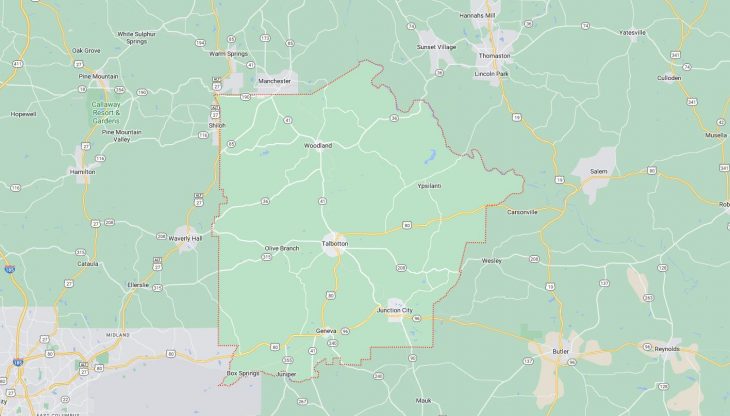Cities and Towns in Talbot County, Georgia
Founded in 1827, Talbot County is one of 159 counties in the state of Georgia. Historically, Talbot County was formed from Muscogee County. The city of Talbotton is the county seat. With FIPS code of 263, Talbot County has a population of 5,742 and area of 393 square miles (1,018 km²).
List of all cities in Talbot County, GA alphabetically
| City/Town | Postal Code | Area Code |
| Box Springs, GA | 31801 | 706/762 |
| Geneva, GA | 31810 | 706/762 |
| Junction City, GA | 31812 | 706/762 |
| Juniper, GA | 31801 | 706/762 |
| Talbotton, GA | 31827 | 706/762 |
| Woodland, GA | 31836 | 706/762 |














































